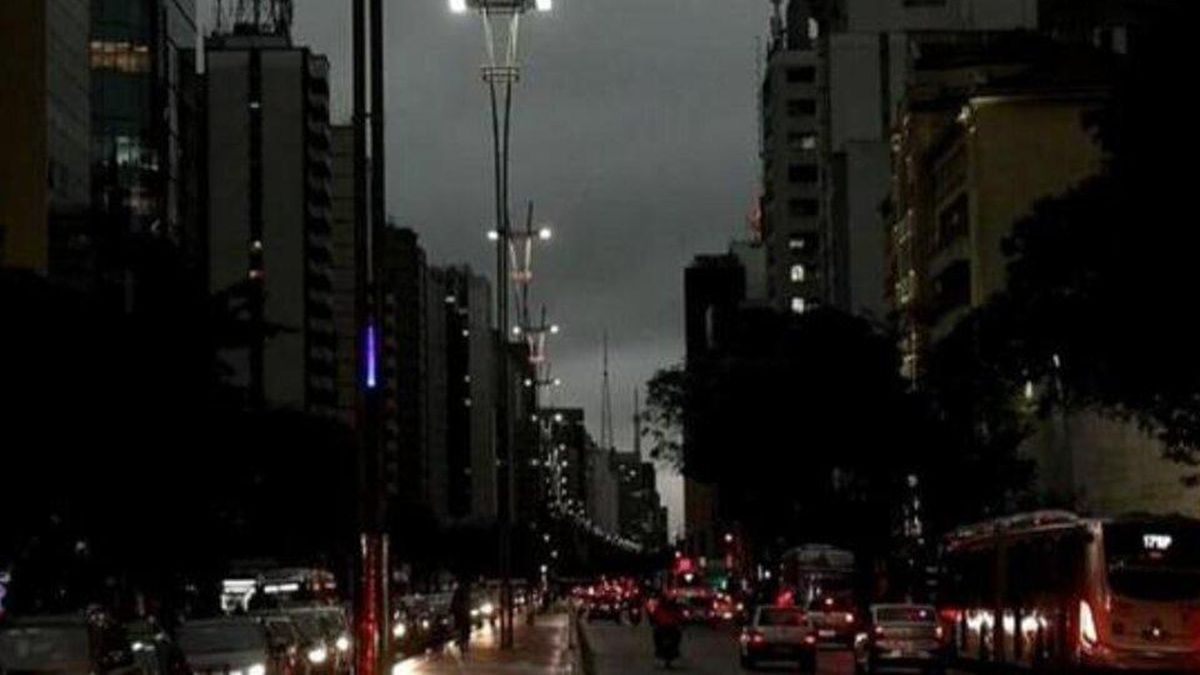On Madero Avenue, In the imposing Macro Tower, the artist Andrés Paredes presents the anthological exhibition “The Gold of Dreams”. There, in the bright corporate building that bears the signature of Cesar PelliParedes once again displays the charm of nature inspired by the territory where he was born, the town of Apóstoles in the province of Misiones.
In his own tropical paradise, his openwork trees and forests emerged from paper cut out in the wavy shapes of the jungle. Now, in the middle of the exhibition, Walls He observes: “I decided to live in Buenos Aires and since then my work has changed. When I settled in La Boca for the first time, I thought and worked in the midst of the rigor of the urban jungle, in a workshop with the door open to the street.. The context that surrounds me today has determined changes in my production. I no longer work looking at nature, I am not awakened by birds or listening to the sounds of the jungle. Now I create my works based on rather distant memories that feed my imagination.”
The title of the exhibition, “The gold of dreams”coincides with that of a large-format work made on profusely cut paper and painted in gold, which resembles interwoven gold. “I have never spent so much time on a work”recognizes Wallswhile looking at the undulating shadows and the colors of the back of the paper that are projected onto the wall.
The artist points out that although manual work, both cutting and modeling in ceramics, are tasks that define the result of the works, “The gold of dreams” It is linked to the search for happiness through beauty.
“It combines the transformation capacity of butterflies, when they reach the final phase called imago and can reproduce, with the legend that says that at the end of the rainbow there is a container full of gold.. This work speaks of finding oneself, of the desire to feel truly fulfilled and the ambition to find happiness at the end of the rainbow. I believe that happiness is achieved through beauty. There are many curved and also geometric lines in perfect harmony, I learned the technique of hand-cut paper in the classes of a German teacher in Oberá, there in Misiones,” she adds. Walls.
The artist’s experience evokes the memory of Charles Baudelairewhich, in “The painter of modern life” ensures that Stendhal comes closer to the truth than many others in saying that “beauty is nothing but the promise of happiness.”
It is a phenomenon that simply “happens,” as he points out. Borges when referring to “the singular emotion called beauty, that beautiful mystery that neither psychology nor rhetoric can decipher.”
Since the 19th century the “Stendhal syndrome” It is the paradigm of the symptom – more or less intense – that can bring about a certain aesthetic experience. The syndrome gained fame when Stendhal recounted that he was in Florence and, overwhelmed by the beauty of art, the ecstasy caused him to faint.
Today, While the ideals of beauty fall into oblivion or simply no longer provoke admiration, artists like Paredes strengthen the historical awareness of enjoyment which has been a source of beauty since the dawn of mankind. When faced with a work such as “The Gold of Dreams”, the viewer’s eye seems to be more attentive, his gaze becomes more incisive and his perception more refined. In short, man has become more adept at guessing and detecting the subtle or profound alterations that affect him through beauty.
On the other hand, in the middle of the architecture of Pelli (perhaps too partitioned in some areas)a gigantic, dark butterfly stands out among the rays of light entering through the glass dome. The prodigious growth of this butterfly is perceived as something strange. The grace of its excessive forms is ultimately disturbing. Perhaps an atavistic impulse determines the desire to return to that territory with the red earth and a humid forest, where life teems.
Asked about the formal changes brought about by city life, given that the current exhibition features butterflies, insects and vegetation as tangled as in the past, the artist replied: “To begin with, colour became an active agent, contributing to creating the atmosphere of the exhibition. I deliberately sought theatricality, the scenographic effect of a garden where time has stopped.I try to provoke a certain aesthetic emotion.” Indeed, unreality is perceived in the gigantic butterflies that fly in the middle of a room, the one made of burnished bronze and also the ones with radiant colors, red, yellow, orange. “It is an artificial garden, idealized, imagined, dreamed, alien to reality,” confirms the artist.
“My entire production revolves around nature and transformation as a central axis,” Paredes concluded. The exhibition curated by Patricia Rizzo will be open until September 27, Monday to Friday from 10 a.m. to 6 p.m.
Source: Ambito
I am an author and journalist who has worked in the entertainment industry for over a decade. I currently work as a news editor at a major news website, and my focus is on covering the latest trends in entertainment. I also write occasional pieces for other outlets, and have authored two books about the entertainment industry.




